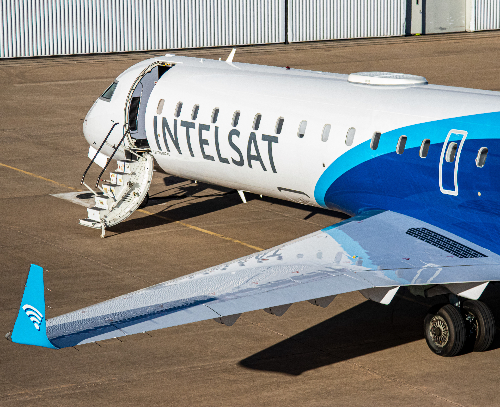Intelsat completes multi-orbit Wi-Fi tests
- March 20, 2023
- William Payne

Satellite network Intelsat has completed in-flight testing of its new electronically steered array (ESA) antenna. This antenna enables global streaming-fast Wi-Fi service and is available to airlines around the world.
Intelsat’s ESA can operate between low Earth orbit satellites and geostationary satellites. Announced in June 2022, the new antenna has been accumulating flight hours with Ball, Stellar Blu Solutions, Intelsat and OneWeb engineers validating antenna and network performance.
In early 2023, Intelsat demonstrated the new system to global airlines on the company’s Bombardier CRJ-700 regional jet outfitted with the new antenna and in-flight Wi-Fi system. With in-flight download speeds exceeding 275Mbps, airline customers participated in live virtual meetings, streamed media and stayed connected without interruptions.
By using the Intelsat and OneWeb satellite networks together, Intelsat can offer the benefits of LEO’s low latency along with the redundancy GEO provides to address network hotspots that LEO networks on their own cannot address. Whether aircraft are flying polar regions or over the most populated cities in the world, the ESA antenna will offer seamless coverage from take-off to touchdown.
“After installing the system in December, we’ve been hard at work perfecting this new technology and have taken some of the world’s leading airlines for test flights. An antenna without moving parts, that is much smaller than its predecessors, enables airlines to compete in the marketplace, delight their guests and have confidence that Intelsat’s multi-orbit antenna will provide the best performing inflight connectivity experience in the market,” said Jeff Sare, president of Intelsat Commercial Aviation.
Alaska Airlines recently announced plans to use Intelsat’s ESA terminal and IFC services aboard its fleet of Embraer regional jet fleet. Intelsat has supplemental-type certificate programmes under way for a wide range of aircraft and expects to begin delivering and installing shipsets in early 2024.




